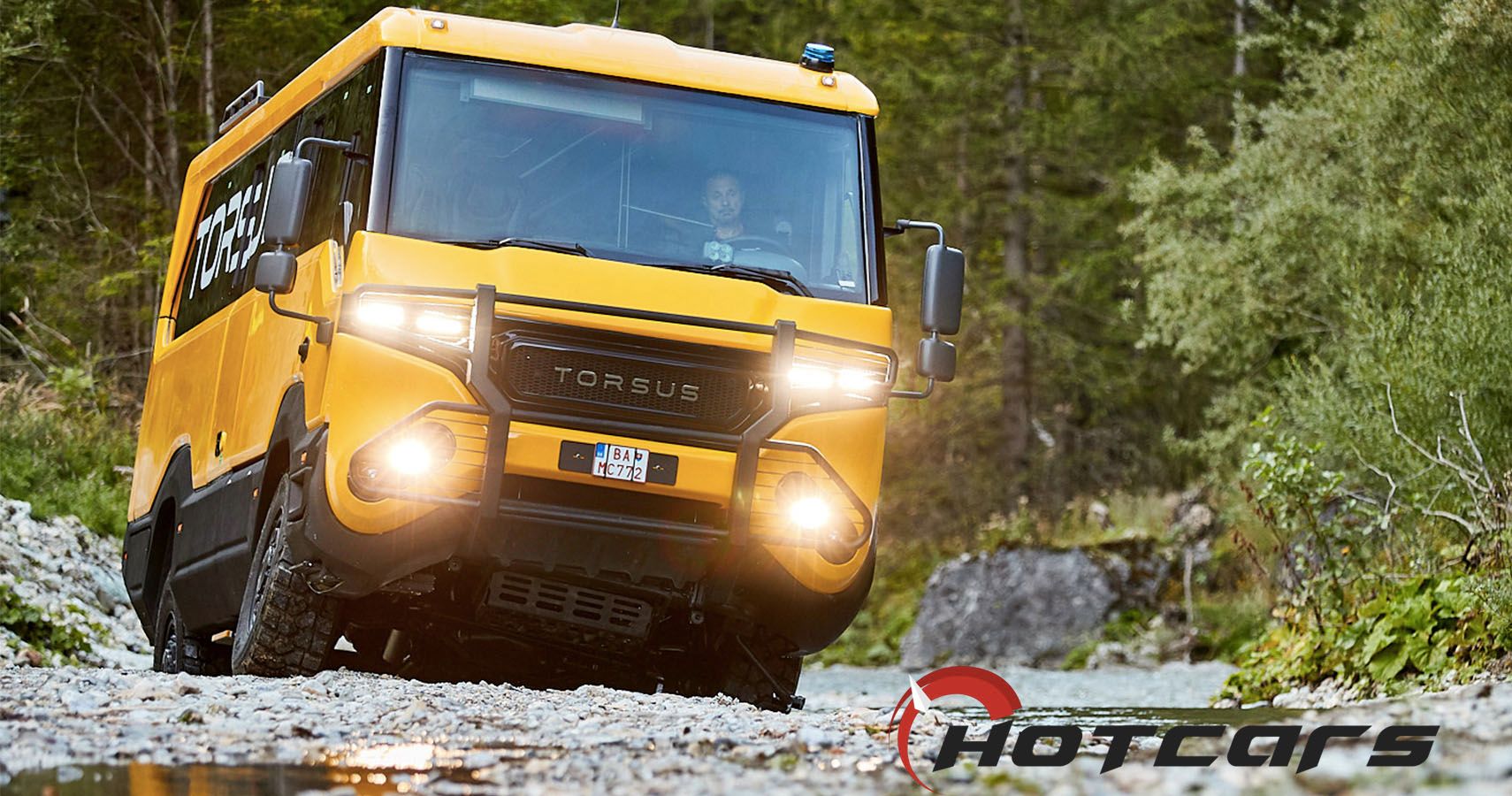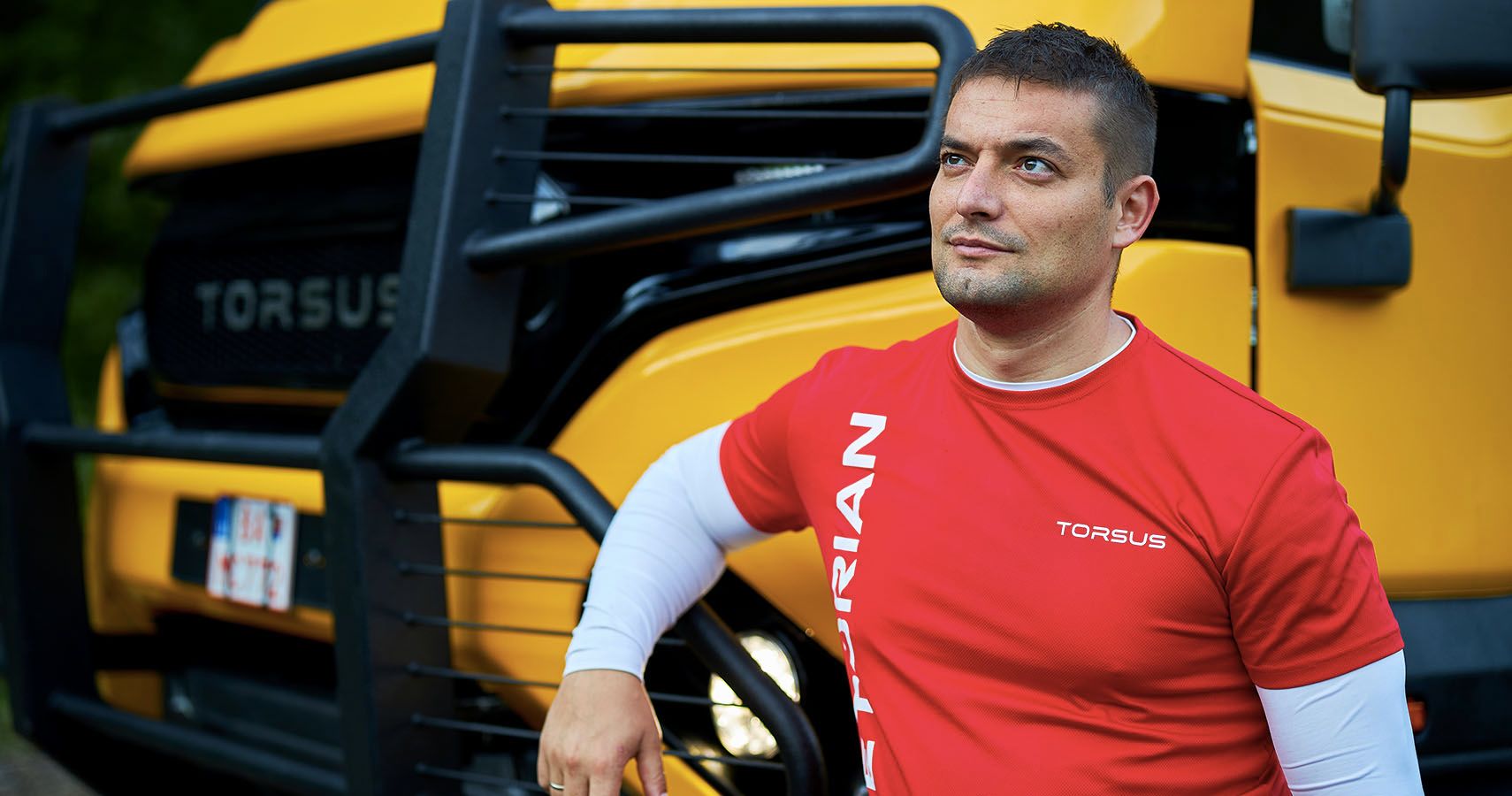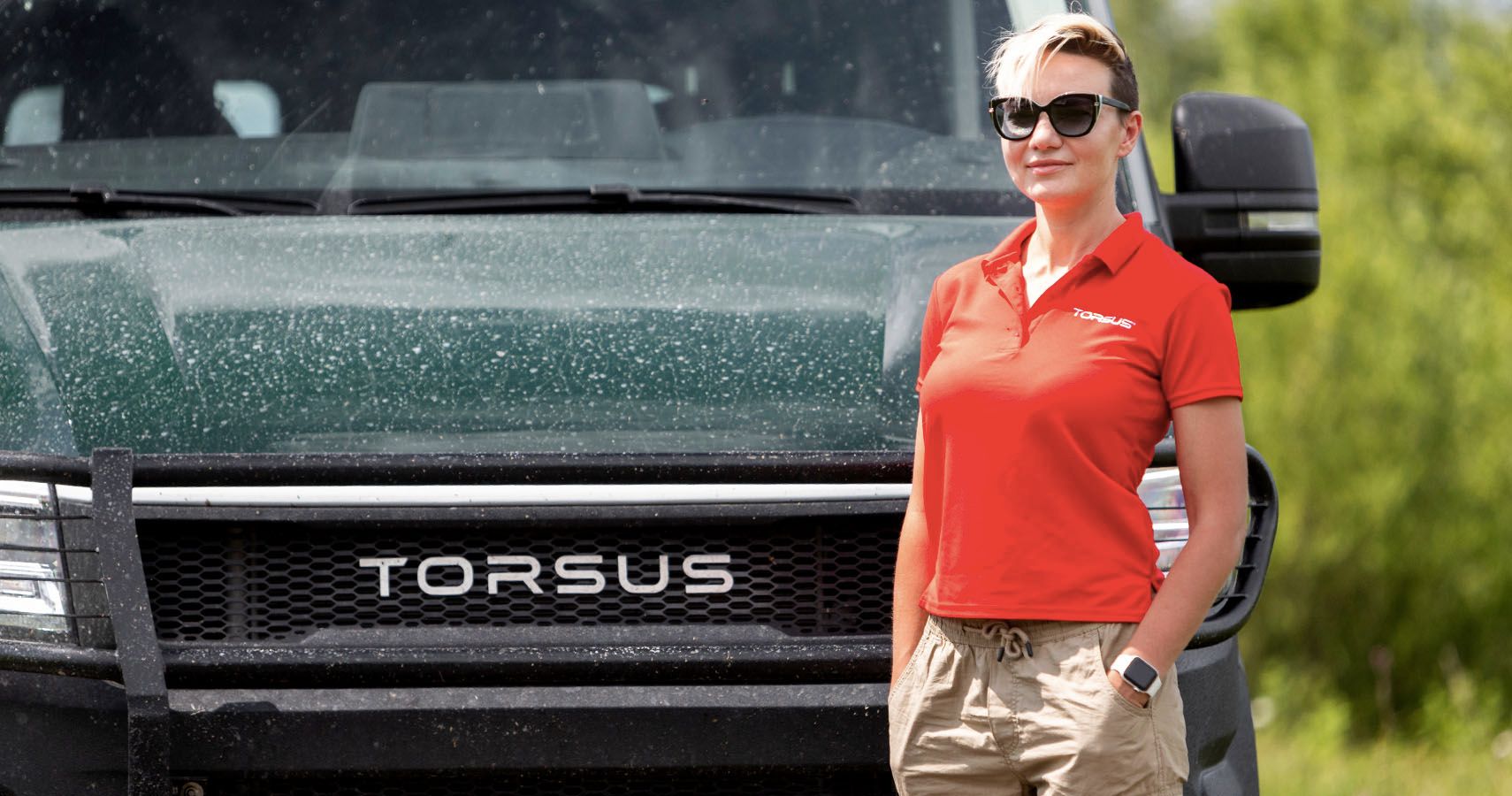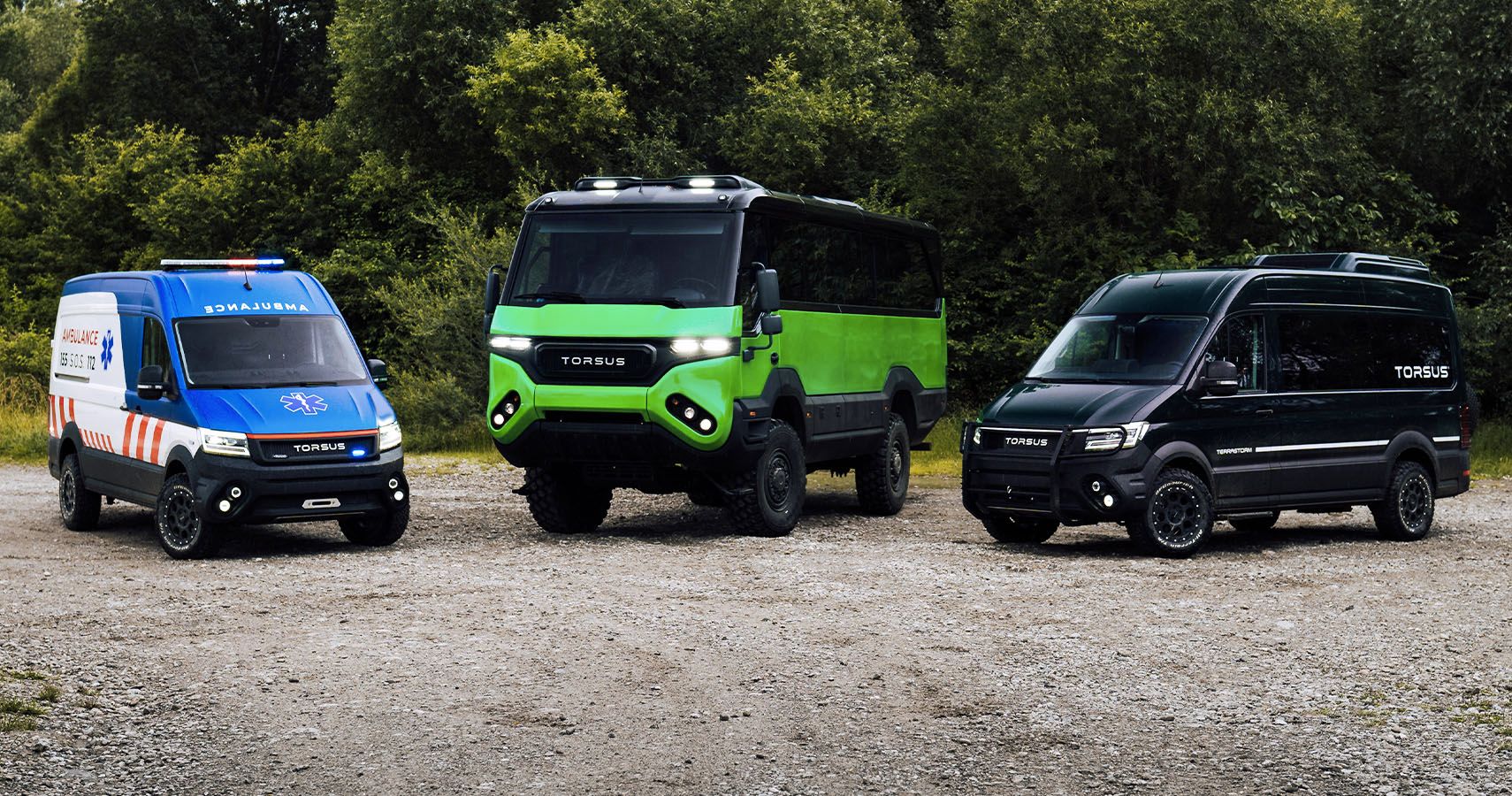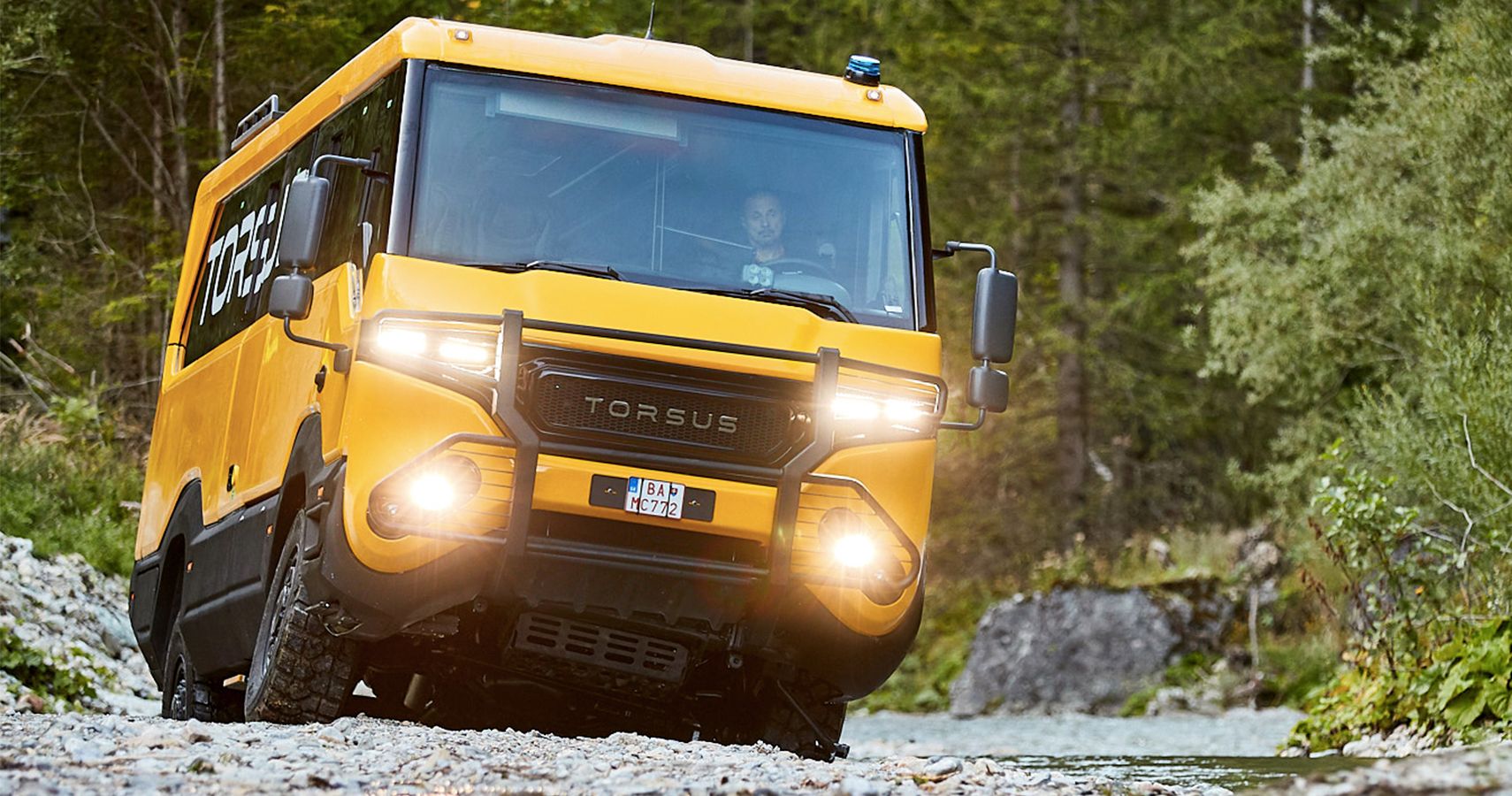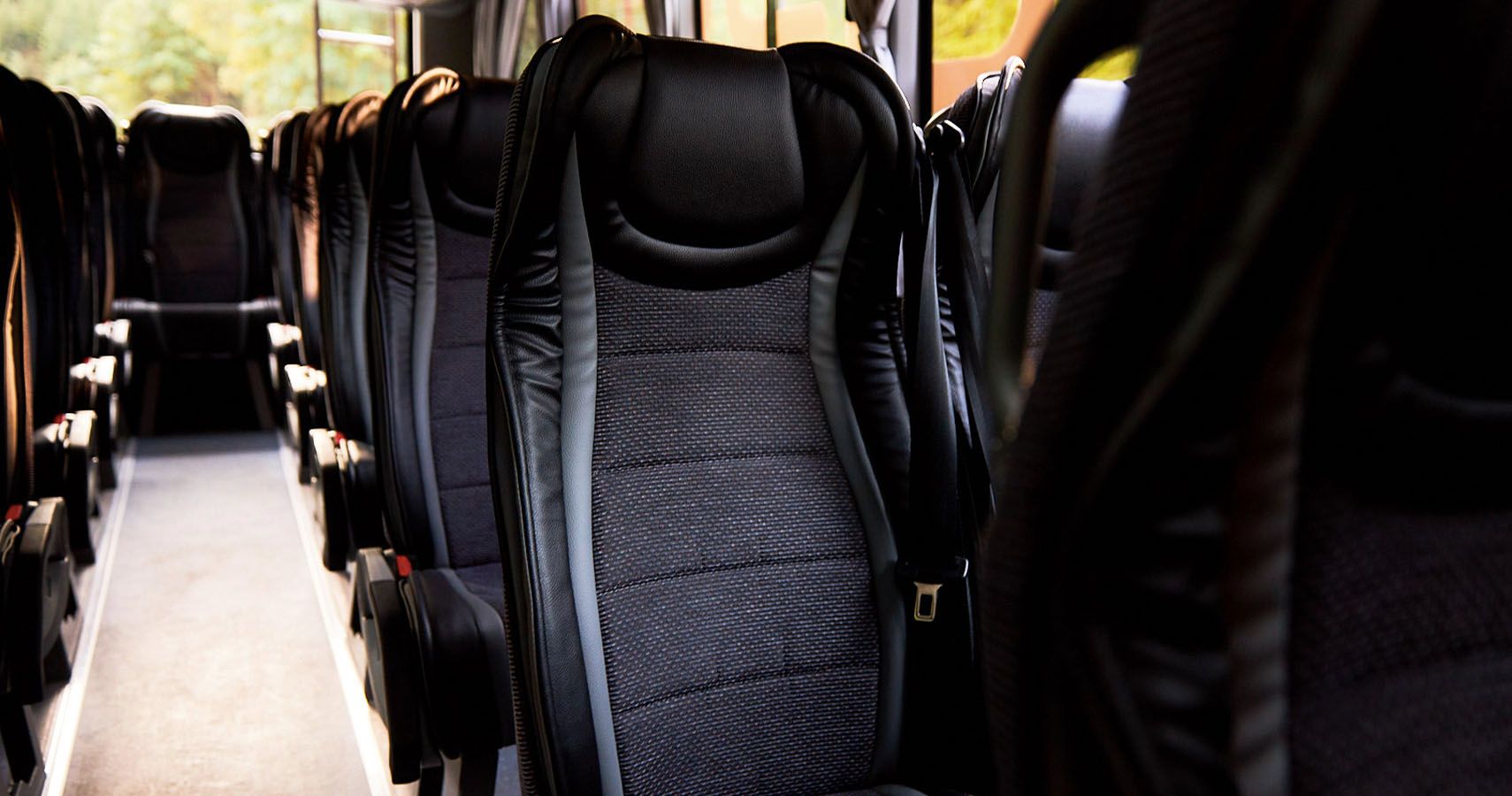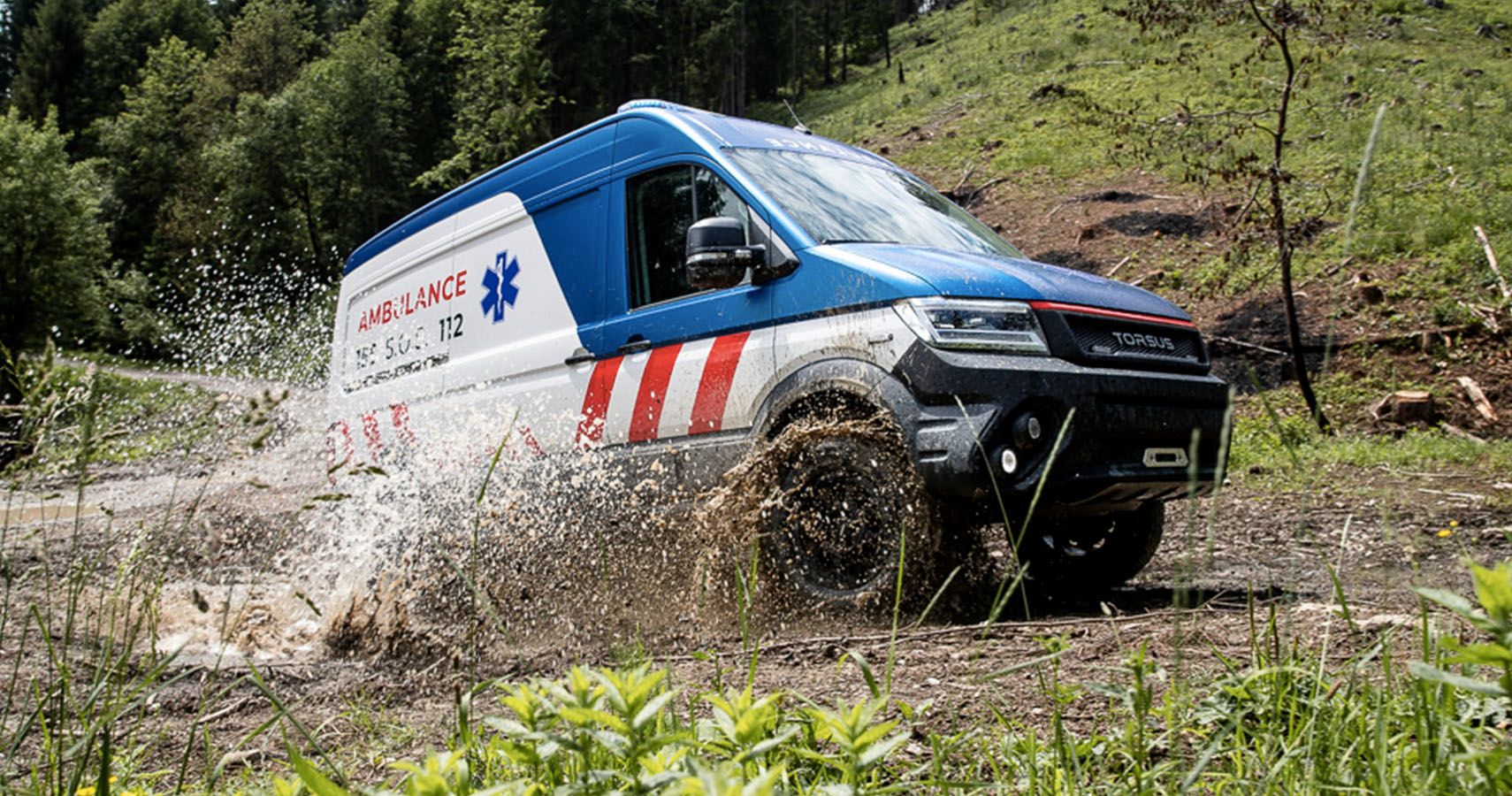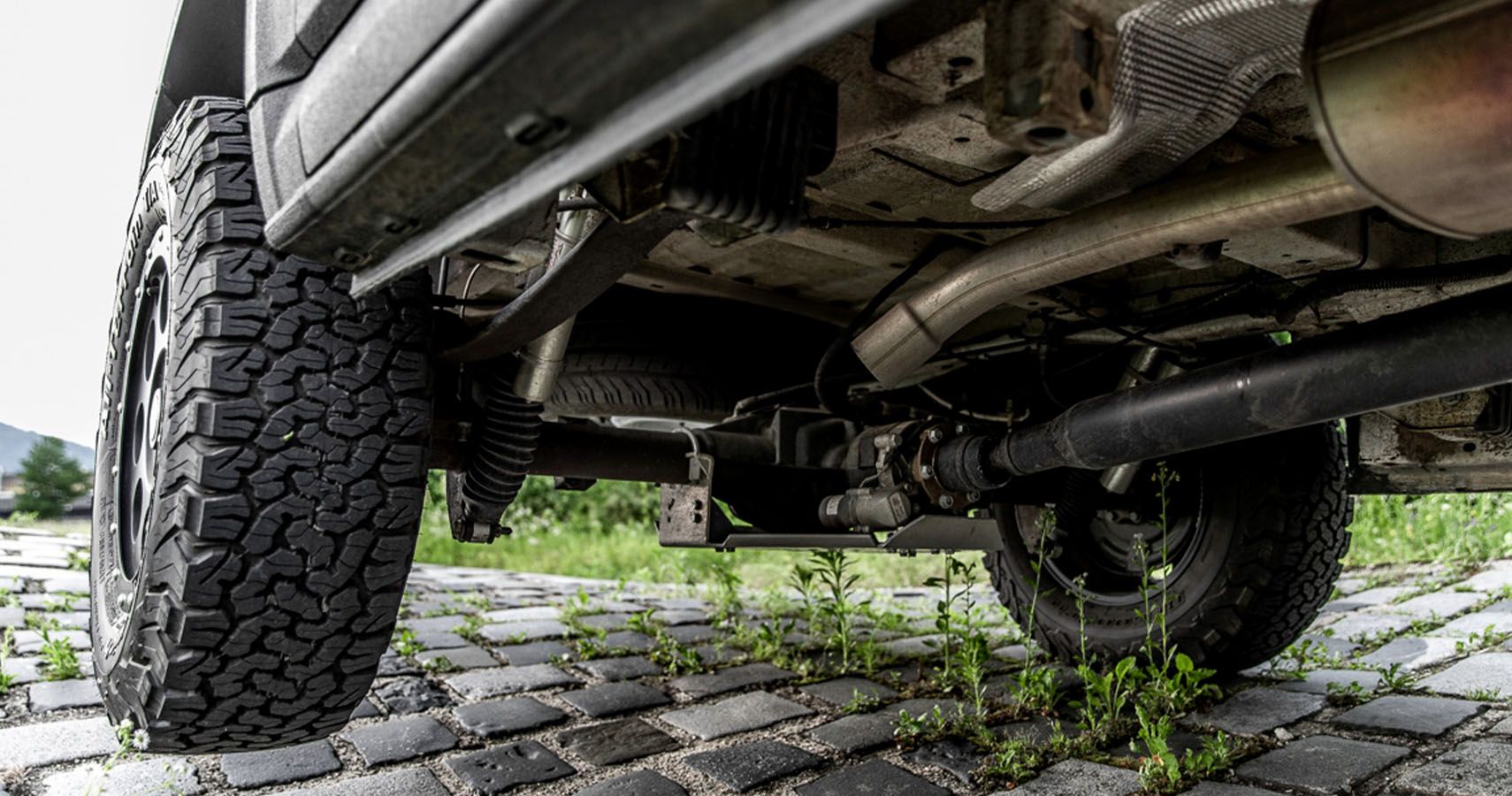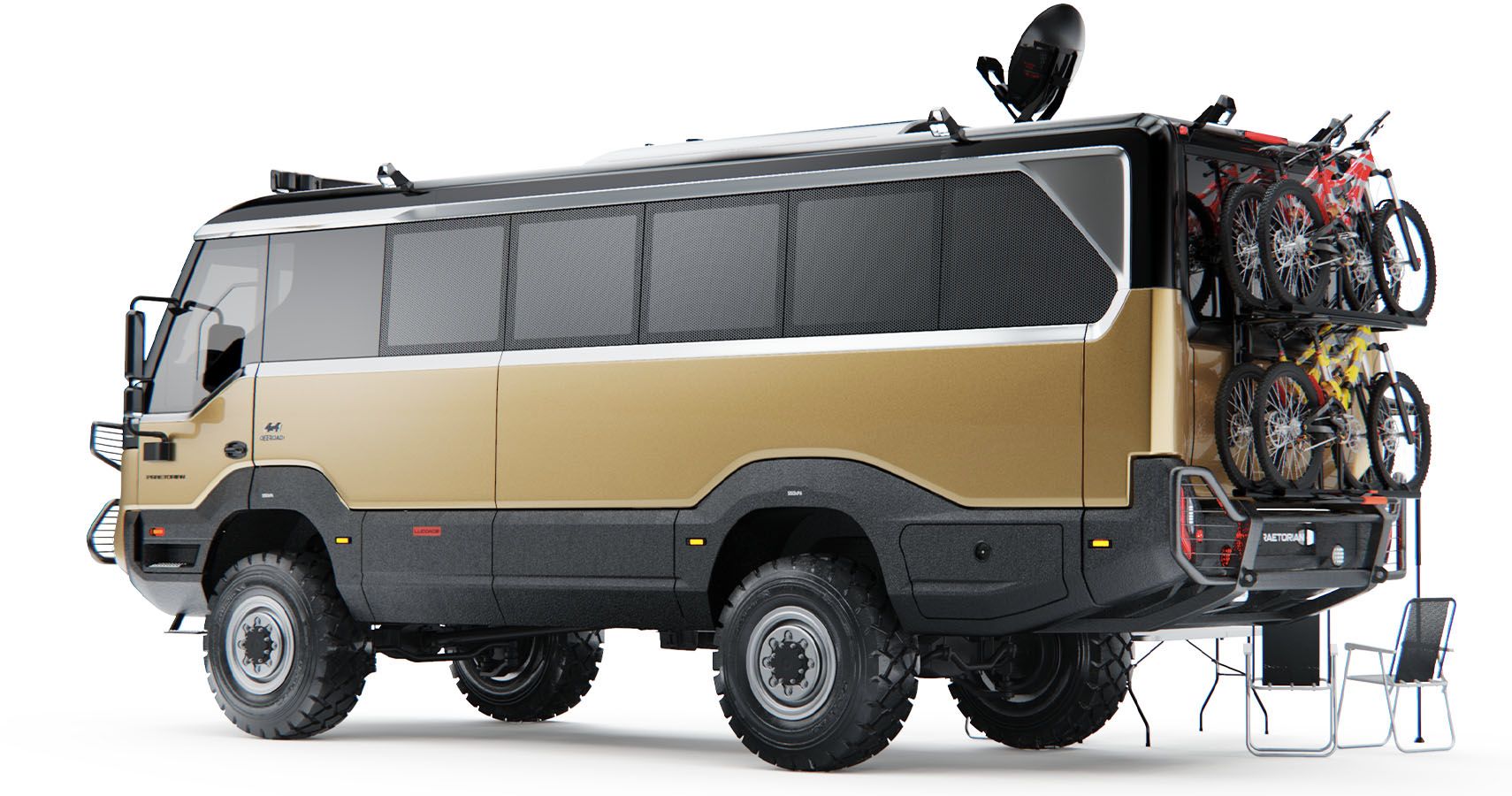The off-roading obsession gripping the American automotive marketplace only seems likely to heat up further as coronavirus-related closures and shutdowns continue to spread. Luckily, buyers on the market for a new rig find themselves spoiled for choice, with the Jeep Wrangler, its Gladiator pickup-truck sibling, and the Ford F-150 Raptor being joined in short order by the newly revived Bronco and the forthcoming Hellcat-powered Ram TRX. Even the likes of Land Rover jumped into the mix with the new Defender.
Anyone who's been four-wheeling for years before the current boom might scoff at these pristine, powerful, and—most importantly—expensive off-roaders. But those same enthusiasts have clearly revealed that they're jealous of the rest-of-world market, wishing they could get their hands on a J70-gen Toyota Land Cruiser, a Unimog, a Mitsubishi Montero Evo, or even just a nice, bulletproof diesel engine.
The complex laws and processes required to federalize vehicles mean that Jeep has happily lived without much of a true competitor to the Wrangler for decades (until Ford decided to spoil that party). But the RoW landscape is full of 4x4s—in all shapes and sizes—that will never make it to these shores, from individual weekend toys to rugged, military-derived buses and vans.
One Czech company named Torsus has been making waves in the industry for a few years now, having recently followed up on a massive 4x4 bus known as the Praetorian with a new, smaller off-roader called the Terrastorm that’s been built with a bit more mass-market appeal in mind. Torsus mainly sells its products to non-governmental organizations (NGOs), tourism companies, and industrial corporations with operations in almost every country except the US—but all that could be changing in the near future.
I recently spoke with Torsus CEO Vakhtang Dzhukashvili, as well as his wife-turned-business-partner, Yulia Khomych, about the rigs Torsus builds today and what might lay ahead as their gaze turns to the future.
Torsus CEO Vakhtang Dzhukashvili
Dzhukashvili began our chat by emphasizing to me, enthusiastically, just how much he recognizes the inherent fun of the modern 4x4 and muscle car wars dominating Detroit headlines. He and his wife are in the off-roading business but, he said, “We also like muscle cars, we think that American muscle cars are a must for our generation.”
Torsus came about after Dzhukashvili cut his chops as a salesman for Ford, graduating to the position of fleet manager and on to fleet sales. He quickly began fulfilling complex orders to NGOs like the United Nations and the Red Cross. “All the time, it was all about the vehicles,” he said. “Dealing with converted vehicles, special ones, and delivery to really special territories.”
As his clientele base expanded, his wife, Yulia Khomych, joined the effort to lend her experience after a career in international law—experience which would quickly prove quite useful.
Director of Strategy & Head of Legal (and Wife & Mother) Yulia Khomych
“I’ve always been a pure corporate lawyer,” Khomych told me. “My specialization was private international law. I worked for big international law companies and investment companies. There was a period when I had my own firm and was a partner there.”
But cutting contracts behind a desk wasn’t in the cards for Khomych, who found herself craving the outside world. “Some ingredient in all of that was missing. I’ve always wanted to be somewhere in the field seeing real business, not just sitting in the office.”
That opportunity would present itself in the form of a confident young man named Vakhtang Dzhukashvili, whose mother Khomych met at an ophthalmologist checkup that she scheduled out of concern that her eyes were failing after years in front of the computer. At the appointment, another doctor in the office turned out to be Dzhukashvili’s mother, who rather aggressively said, “By the way, I have a son and he’s a very nice guy.”
Two old ladies in the doctor’s office may have played matchmaker, but when Dzhukashvili called the number on the card Khomych left in his mother’s hands, the two hit it off immediately. “At the first meeting, he was selling himself so desperately,” Khomych laughed, before turning more serious. “He looked a bit different from those men who I used to see in the office, not white-collar at all.”
Six months later, Dzhukashvili proposed. Six months after that, the two married. Today, they have two children, who have been raised with all things Torsus and look upon every Torsus vehicle as one of their own siblings.
A Growing Business
As Dzhukashvili’s international aid sales grew, Khomych said, “We decided that my experience and my knowledge of international law would be very helpful. And for me, it was an opportunity to be in the field.”
The idea to begin building vehicles under the Torsus name continued to gestate. “We were delivering a lot of SUVs, pickups, some trucks where you have the truck and seats inside the canopy on the back,” explained Dzhukashvili. “And we were investigating why the customers and users were ordering these vehicles. We found out a lot of them were delivering large amounts of people from one place to another, but also they had some gear with them. And that’s why they usually had a fleet of SUVs, like Land Cruisers and Wranglers, where they have four or five seats but they need to deliver 30 people.”
“We were thinking of what we could do better. We found out the problem with the small vehicles was that they were small. So they need five or six drivers who aren’t do anything but driving from A to B. Plus they need all this stuff, like communications, which is multiplying the cost and problems.”
Attempting to source the perfect vehicle with plans to flip as a sort of middleman, Dzhukashvili and Khomych kept drawing blanks. Nothing was quite right, so they made the logical choice and began to develop their own concept, which would eventually hit the market with the name Praetorian.
Torsus Praetorian
“Obviously, there were some buses that were 4x4," said Dzhukashvili, "But we didn’t find any that were the same level of safety, same level of comfort, and same level of capability—that also had certification globally. We couldn’t find it, so we began to build it from scratch.”
“We decided we needed to create something which will be like a bus in nature—meaning comfort, safety, big space inside for long distances—but still needs to be off-road and heavy-duty.”
Dzhukashvili revealed that growing conflict in the region lent the fledgling Torsus concept a strong nudge. “At the time when we were doing this project in our heads, the war started between Russia and the Ukraine. And we found out that militaries were using, at that time, normal vehicles, meaning normal buses with two-wheel drive and rear-wheel drive.”
Building a perfect vehicle for transporting human beings across rugged terrain effectively became the Torsus goal, not building a war machine for surviving conflict or enemy engagement. “It doesn’t save their lives directly,” Dzhukashvili admitted, “But you need to have 4x4.”
A Highly Capable Human-Hauler
Today, the Praetorian isn’t just for militaries but rather, purpose-built for a wide range of industries. “One by one, we found a lot of markets. Each industry where 4x4 is needed, they have their own Praetorian," Dzhukashvili recounted. "Our sales team worked with our customers, we found out their operational needs, how they do their daily tasks. We analyzed and then we prepared the Praetorian.”
“Then we found out it’s not only for the international aid programs, like the United Nations. It also works well for mining… And then we found out that extreme tourism is into it. Group tourism, ski buses, buses for river rafting, and, even more, mountain biking. All these extreme sports were interested in a vehicle with the comfort of a bus but off-road capability.”
The Praetorian is built upon a rolling chassis supplied by partner (and Volkswagen AG subsidiary) Man Truck & Bus, with suspension and powerplant already integrated. “Anything more than the rails, we build on our own,” said Dzhukashvili. "This concept is done for a reason, because we believe those companies have been doing it for a hundred-plus years and they can build it better than we would.”
Another benefit of keeping the mechanicals standardized with Man’s products, Dzhukashivili told me, comes in the form of “Global warranty and global service at Man dealers, meaning that if you buy a Praetorian or any product of Torsus, you can service it around the world.”
The Terrastorm Evolution
But all around the world, not everyone needs a big off-roading bus capable of hauling 37 people—Dzhukashvili and Khomych strategized further growth for Torsus by filling more and more niches. The Volkswagen Crafter-based Terrastorm's addition to the lineup is intended to do just that.
“Terrastorm was just organic growth," Khomych said. "One of the ideas flying in our heads was to create a line from very small to very big. So the customer cannot deny our offer saying, ‘You don’t have the vehicle that fits me perfectly.’”
“We found out that 37 people is good, but the driver needs to have a special driver's license," Dzhukashvili added. "Not only a driver's license but he needs to have special skills because the vehicle is big. It’s, of course, very capable but you need to pass some training, and tests, and get licenses.”
“The Terrastorm is still very capable but you don’t need a special driver's license. Just jump in the car and go. And one of your crew can be the driver, you don't need an independent driver that just drives from A to B.”
Rally-Derived Suspension Upgrades
The Terrastorm is based on a Volkswagen chassis, but unlike the Man platform, this time, Dzhukashvili told me Torsus needed to upgrade the suspension to the specs their customers would require.
“One of the things, when we were designing and engineering this vehicle, was we needed it to be protected and durable. The driver needs to be able to drive down the dirt road without thinking he’s going to break the vehicle.”
The result was a full rally-inspired suspension system designed by another partner that prepares vehicles for the Dakar race. “They utilized their knowledge from Dakar vehicles inside of the Terrastorm,” Dzhukashvili explained. “For example, at the rear axle, they use special shock absorbers with remote reservoirs filled with gas to work with high temperatures, high speeds, and bumps under load. Special Bilstein shock absorbers improved with coilovers.”
“One of the other things that we also didn’t find in other vehicles of this size," Dzhukashvili proclaimed proudly, "We do full underbody protection. Skid plates, which start from the front bumper and finish at the rear bumper. When you hit something, like a boat, you just float over. ”
I got excited hearing about the Darak heritage built into the Terrastorm, given that I currently drive a 1998 Mitsubishi Montero, which is US-market spec but related—at least a bit—to the Pajero Evo that’s the winningest vehicle in Dakar history. The connection also piqued my interest because Khomych had said the US State Department previously bought some Torsus vehicles. Would Torsus be shipping the Terrastorm to America?
Praetorian Overlanding Concept
Khomych halted me there, stepping in to cover the legal details. “We are not selling Praetorians to the State Department, those were different converted vehicles. We do not supply them to the US, this is aid from the US government going to other developing countries.”
But, she hinted, “The US market is very interested and very hot about Torsus right now…”
Dzhukashvili shook his head as I asked what else might be on the horizon for Torsus. “One is modification that will make it street legal for the US.” Khomych looked a little stern there, so he went mum on any specific details about when or how the Terrastorm could be converted and federalized. But a potential overland-prepped rendering Torsus sent me shows how the Praetorian could easily end up as an enthusiast's overlanding vehicle.
Even if they couldn't share all the details surrounding their future plans, Dzhukashvili did reveal a few potential paths forward. “We still think that we might have some specific modifications of the chassis which will have more wheels, but this is kind of long term... And as a vehicle manufacturer, we keep our eye on electric, for when the range becomes possible for off-roading. Because right now, the only range possible is for the new Hummer.”
“I can announce that electric is the closest new update. We found out—it was a surprise for us—that national parks want to have electric vehicles," Dzhukashvili said. "They need electric and off-road. And because they know their routines, it makes a lot of sense to have our vehicles haul a group of tourists on these gravel roads and sometimes off-roading. But it was really interesting to us because the electric vehicles in national parks don’t emit noise, so you don’t scare off animals.”
Bringing up the new all-electric Hummer took the conversation full-circle. I mentioned that Jeep had also added a hybrid Wrangler 4xe to the lineup and advertised it as silent in nature, to which Dzhukashvili and Khomych both nodded.
“In some Middle East countries, some of our huge customers say, ‘Oh your vehicle is cool, the only one that could beat you is Wrangler.’ That’s the benchmark for them,” Dzhukashvili told me as we were wrapping up. But he wanted me to be very clear he doesn’t view Jeep or GM as competition for Torsus.
“We can’t go the same places as Wrangler. We don’t want to compete with these brands because we obviously know who they are—and who we are. We try to find our own path.”
Sources: torsus.eu, jalopnik.com, gmc.com, volkswagen-vans.co-uk, and mantruckandbus.com.

